Operation Smash was a practice run for D-day, set up to take place on the Studland Peninsula, in Dorset. I have been there so many times as a child and always felt drawn to the end of the beach, I never knew why... Until now. I don't know how I didnt notice it but Fort Henry stands proud on a cliff top overlooking the beach.
The exercise was watched by King George VI, then Prime Minister Winston Churchill, Supreme Allied Commander General Dwight Eisenhower and General Montgomery. It involved rocket attacks and an assault landing with thousands of infantry on 4 April, 1944, all with live ammunition.
The exercise was so realistic that a crew of six men drowned when their Valentine semi-submersible tank sunk.
Today, much remains, earlier slit trenches criss-cross the area, quite a few pillboxes and range observation posts are still standing but as part of Studland beach is a designated nudist beach, many were blown up by the army to prevent weirdos being able to spy on the beach. Some Alan Williams turrets lie in the undergrowth, bullet riddled from the exercise. The beach was covered by scaffolding and minefields up to 1944 but some of this was removed for the operation.
I didnt get round to all of it as darkeness fell but most of the pillboxes and OP's are of variant construction, so definately worth a wander through the heathland.
Another interesting defence of the beach was the flame fougasse system. There are various remains of this in nearby woods, and rusted pipes leading onto the beach, although I didn't venture after any of it.
Here's an extract from Wikipedia about the weapon.
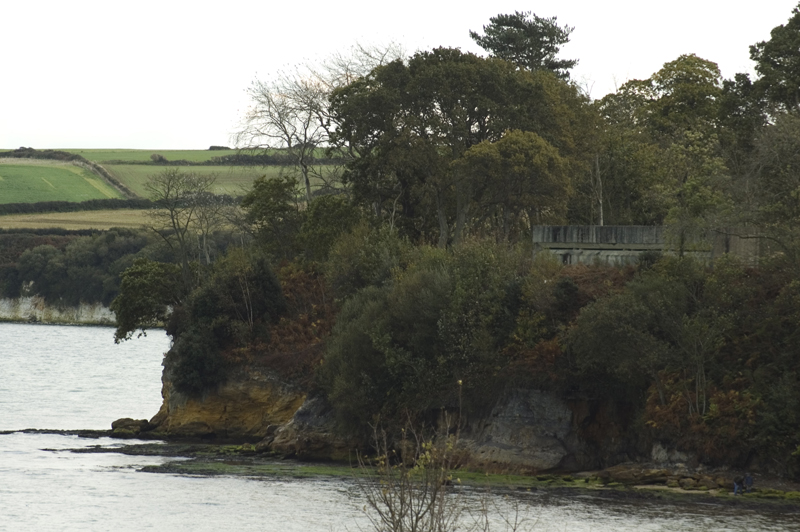
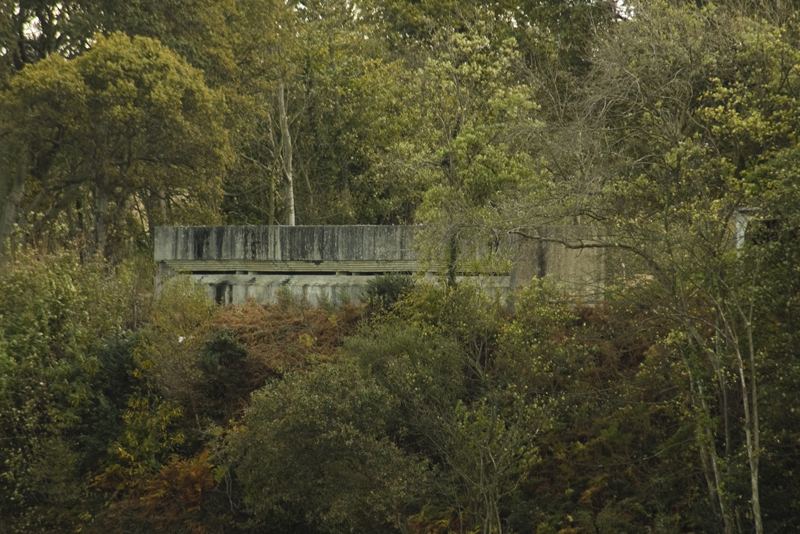
Fort Henry looming over the beach.
The 'fort' was built in front of a gun emplacement, built in 1940, obscuring its angle of fire and rendering it useless. I suppose the threat of invasion was imminent in 1940 but in '44 it was the other way round so the gun emplacement wouldnt have been necessary.A Norcon pillbox also rests at the base of the cliff underneath.
The site is owned and maintained by the National Trust with free parking for memers or £3 for non members. There is loads to do in the area with some beautiful scenery. I lost count of how many deer I had close encounters wih in the woods as dusk fell.
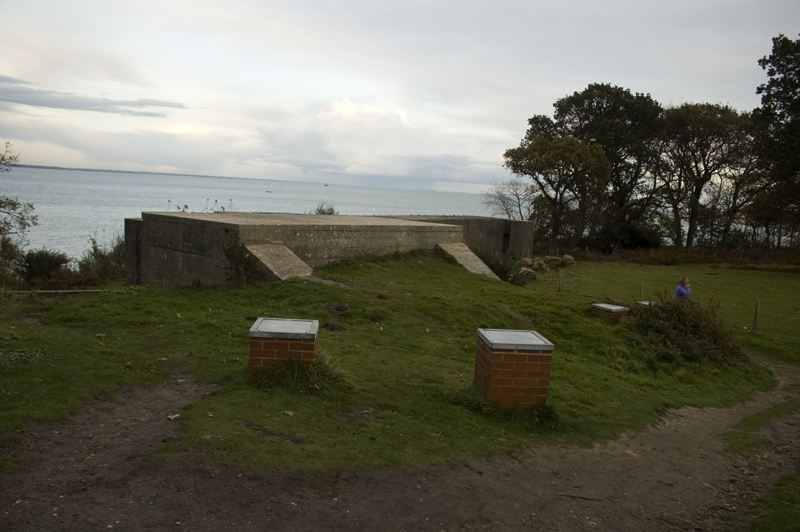
The new brick vets show the extent of the underground magazine.
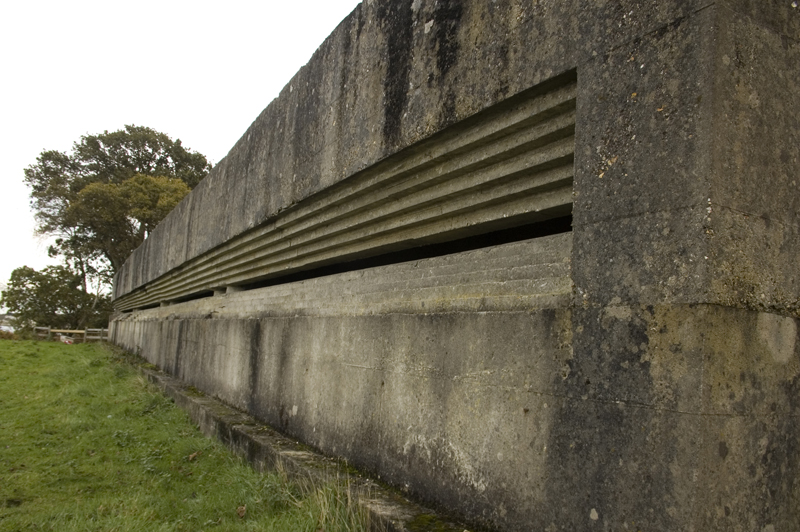
The huge observation embrasure.
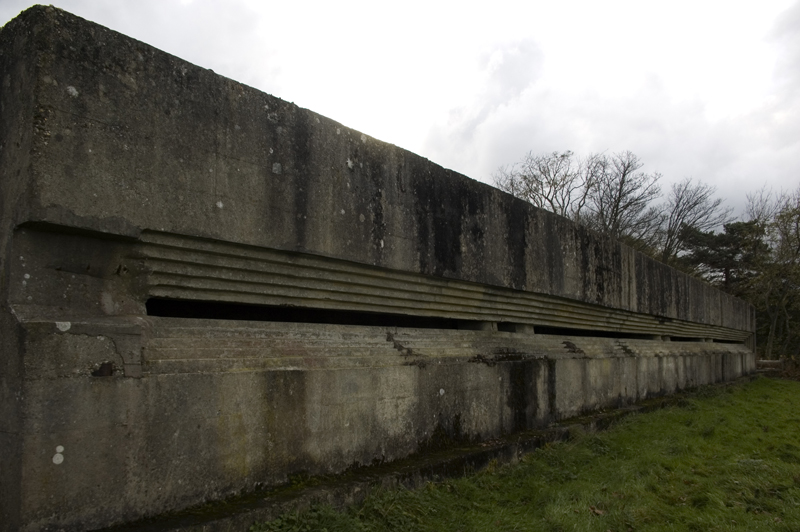
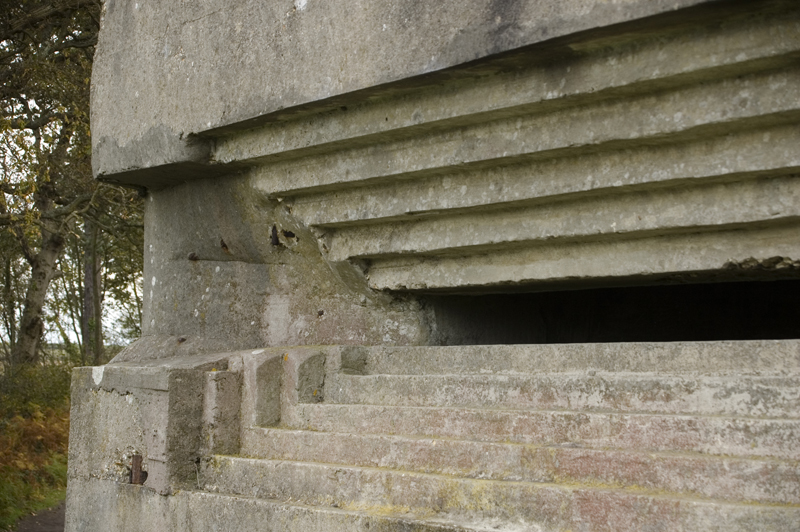
This corner appears to have been cut out to give a wider view to the west.
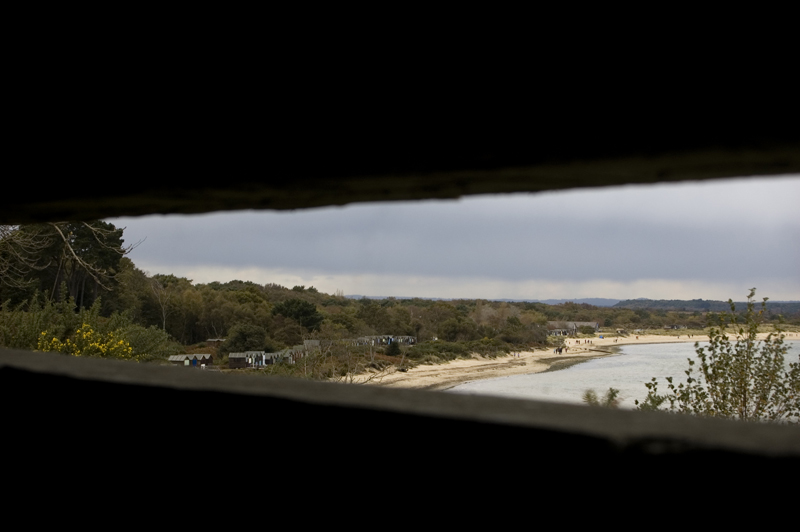
The view looking east along Sutdland beach. 64 years ago the view would have been completely different.
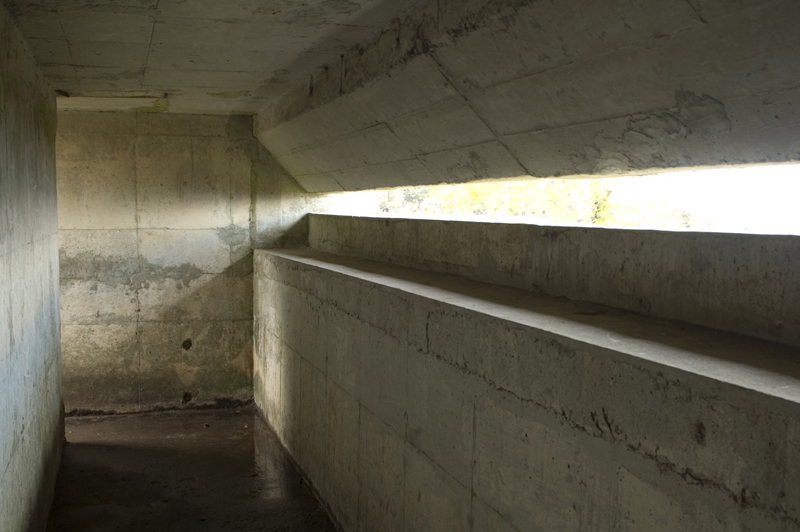
The interior was split into four sections with blast walls seperating each. I found it a very tight squeeze with my camera bag on, I'm sure Mr Churchill would have had trouble! I stopped to contemplate, the allies' top brass would have been stood in this very spot planning the invasion of Europe.
I found the level of tthe embrasure very awkward for an observer and quickly realised a bench would have run the length of the room, giving an easier position to watch the 'battle'.
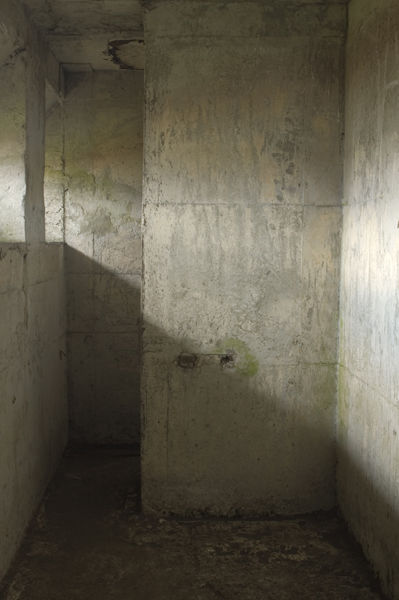
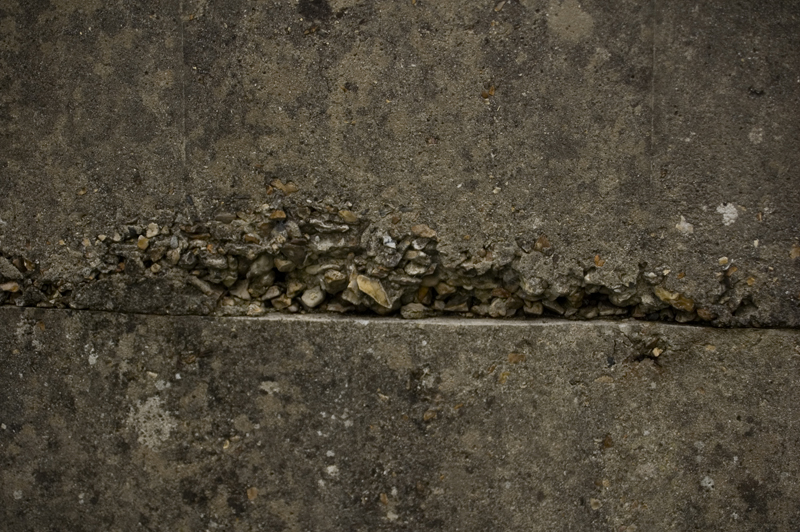
Close up of construction. The OP was built in two apparent stages.
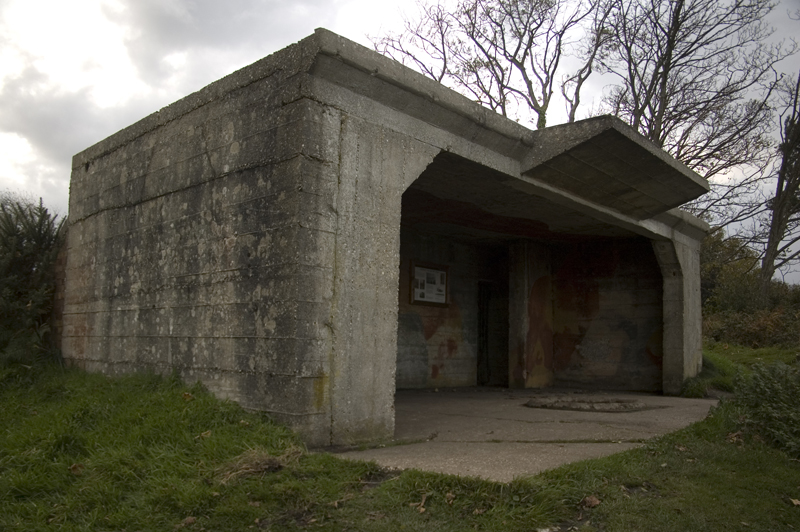
The gun emplacement behind the main bunker. Note the camouflage paint is still easily visible.
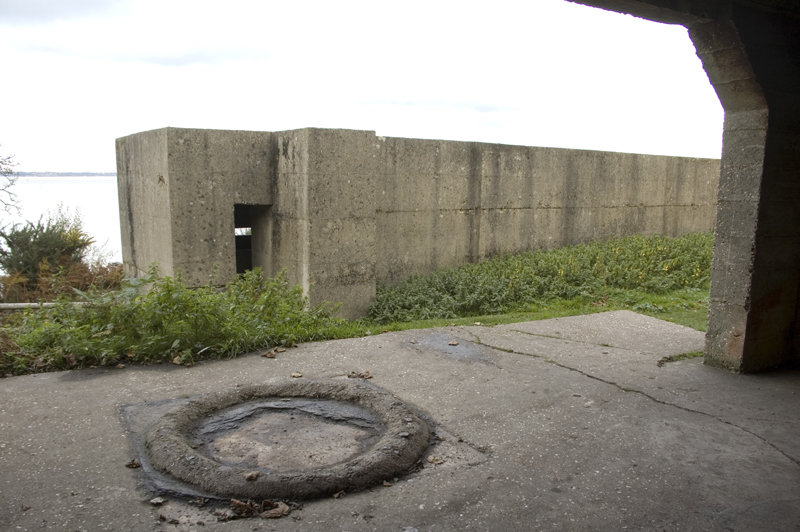
You can see how Fort Henry was plonked righ in front of it.
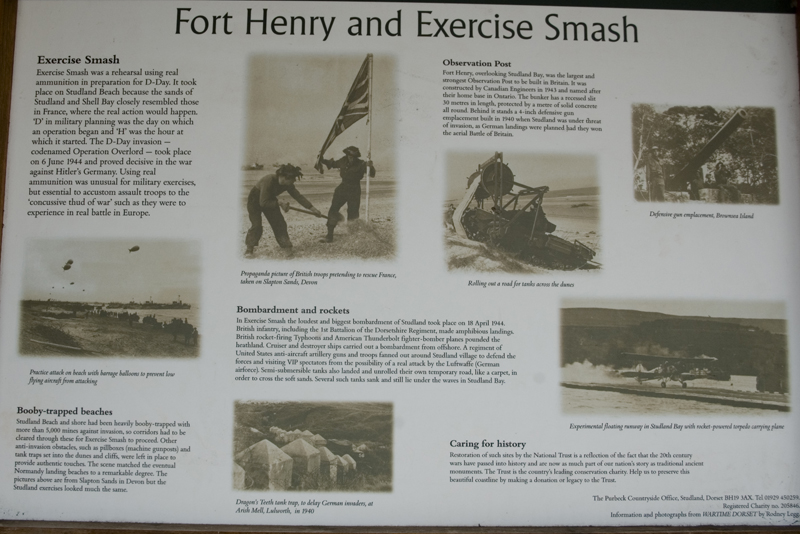
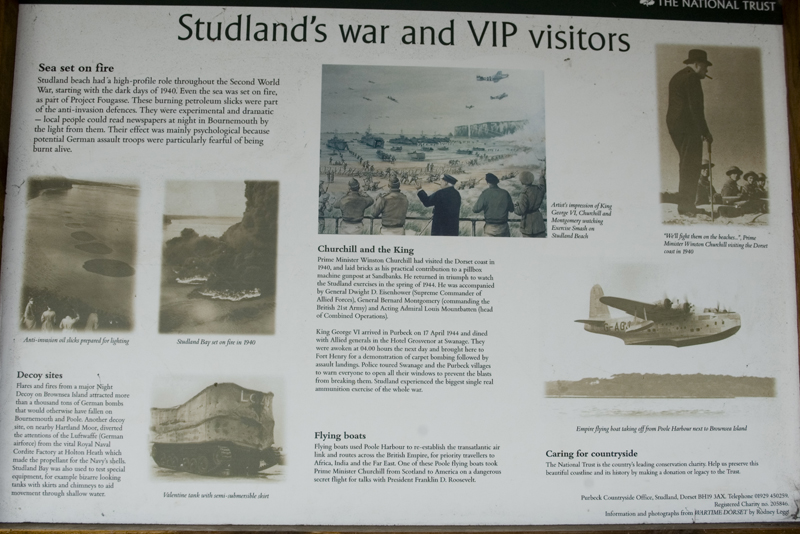
National Trust information boards inside.
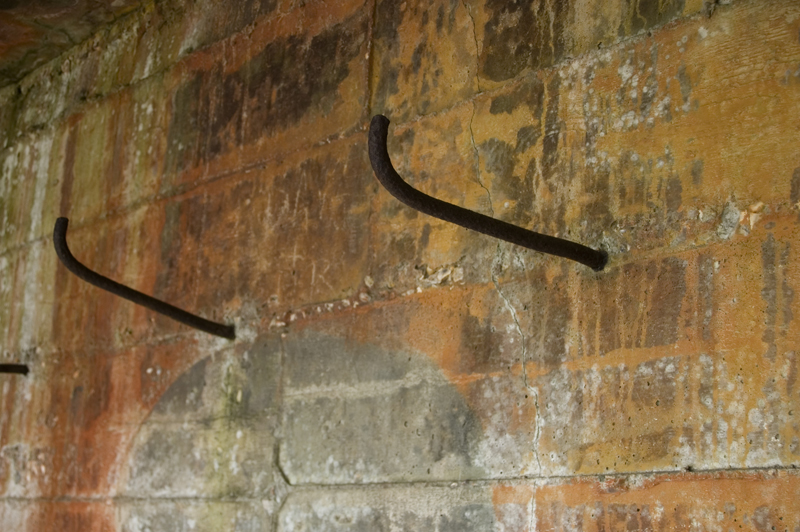
There were three metal rods protruding from the wall, presumably for storage.
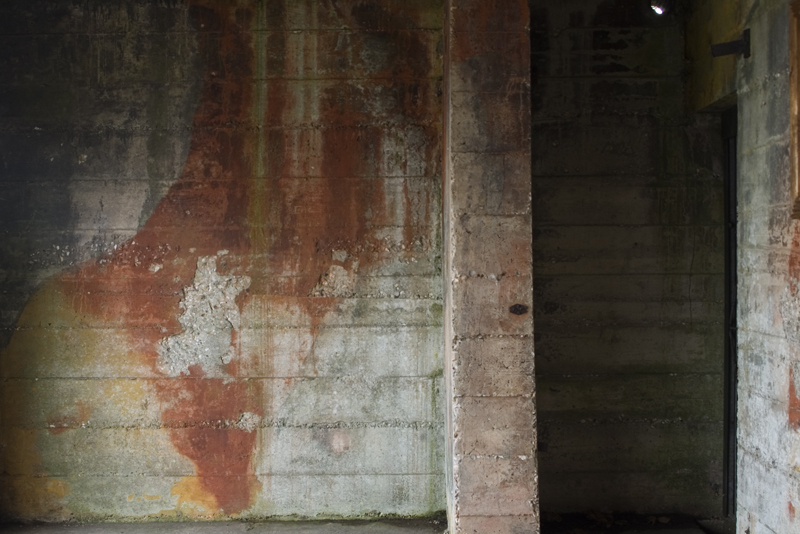
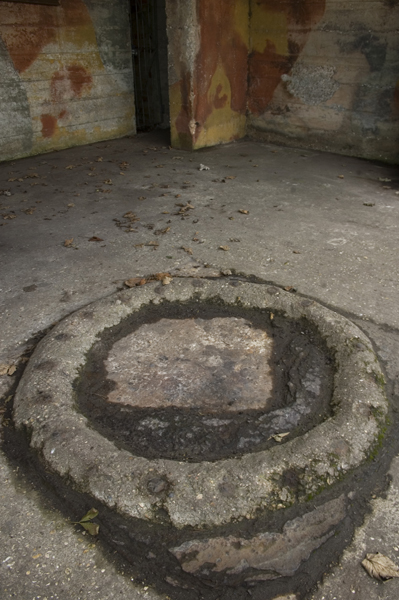
The gun mount with an entrance to the underground chamber behind. These were gated and locked unfortunately. I'd love to have a gander inside.
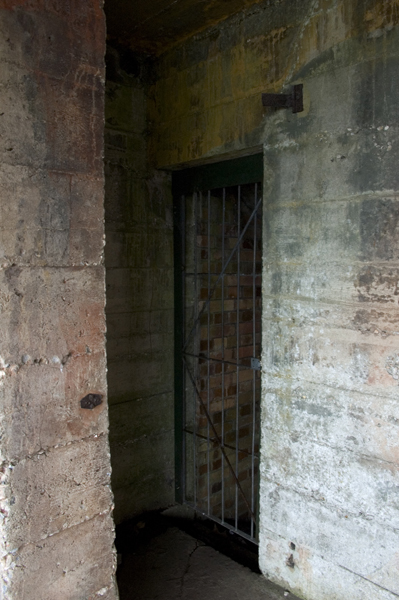
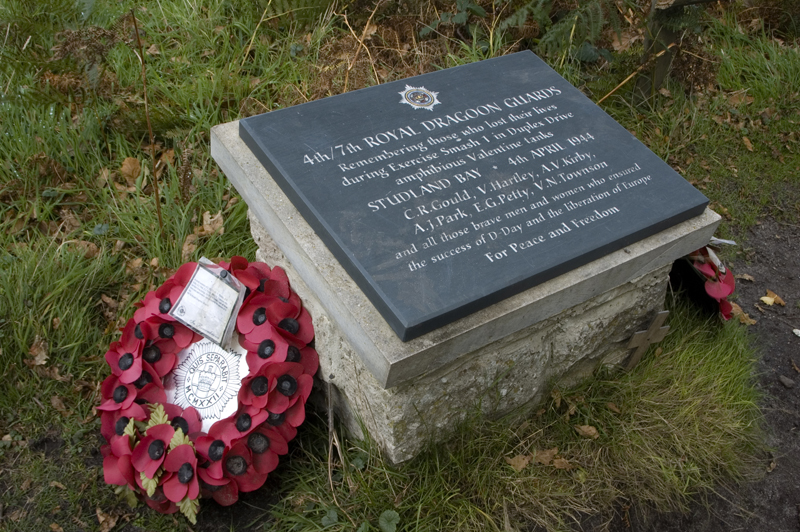
A memorial to the soldiers who lost their lives in that tank.
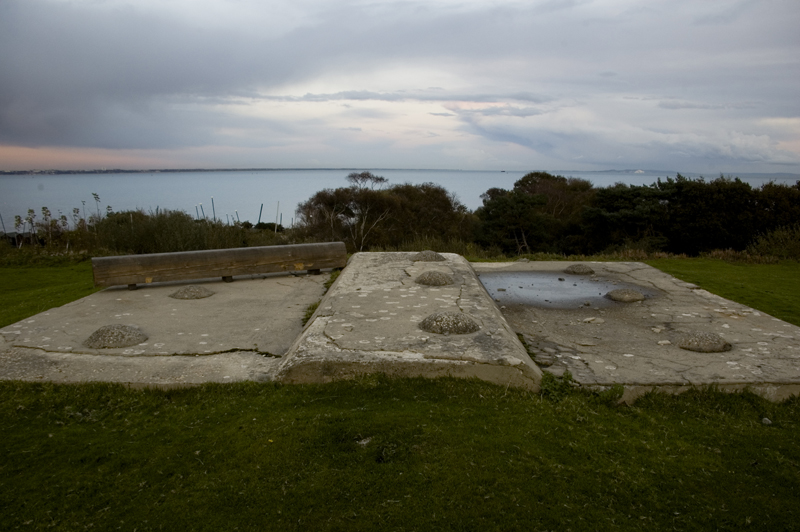
I found this structure walking back along the top of the cliffs. I have no idea what it's purpose was but it looks to be as old as the rest of the WWII fortifications.
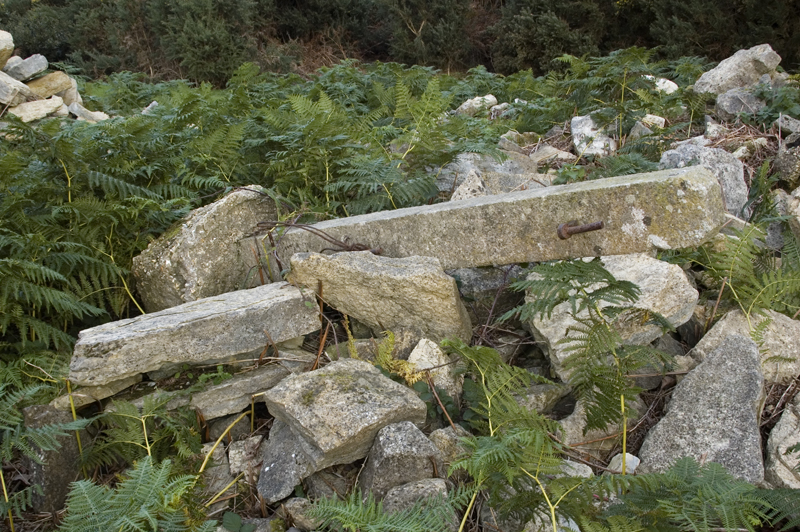
Piles of rock and concrete lay around nearby.
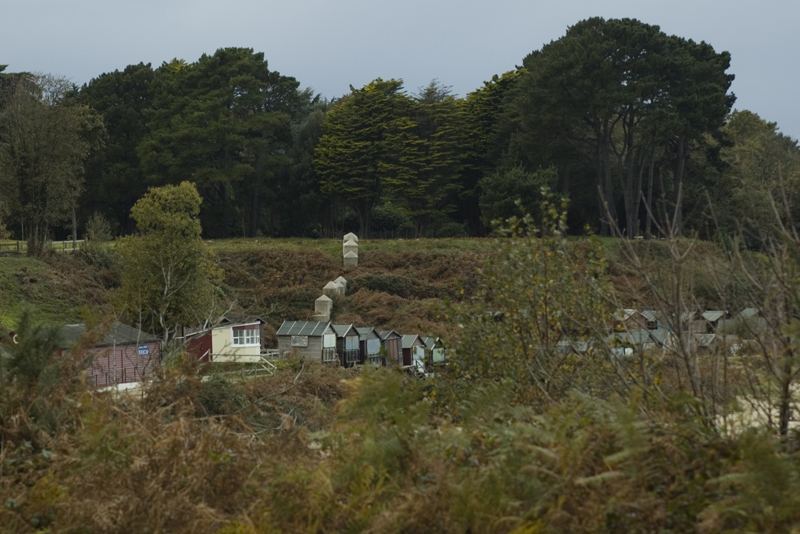
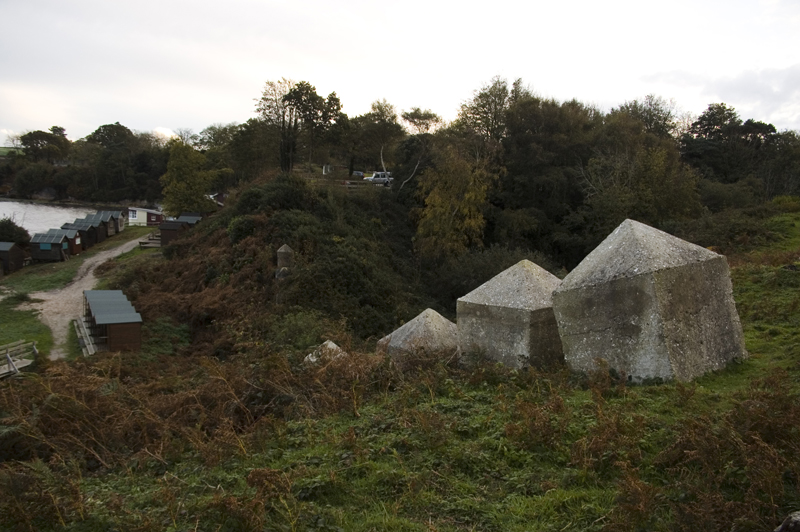
Dragon's teeth still guard the gullies nearby. They were built in situ.
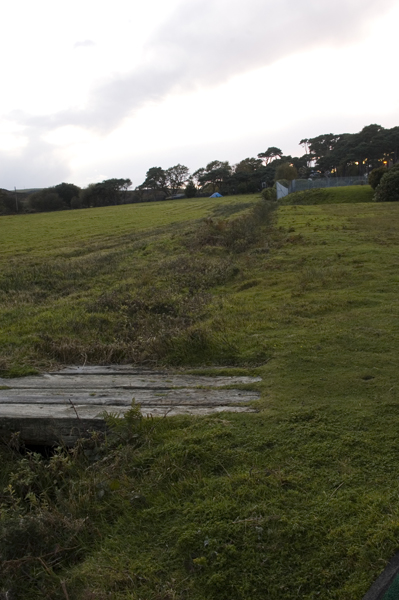
This may, or may not be an example of one of the abundant slit trenches in the area, the field, which is now a mini golf course is riddled with them.
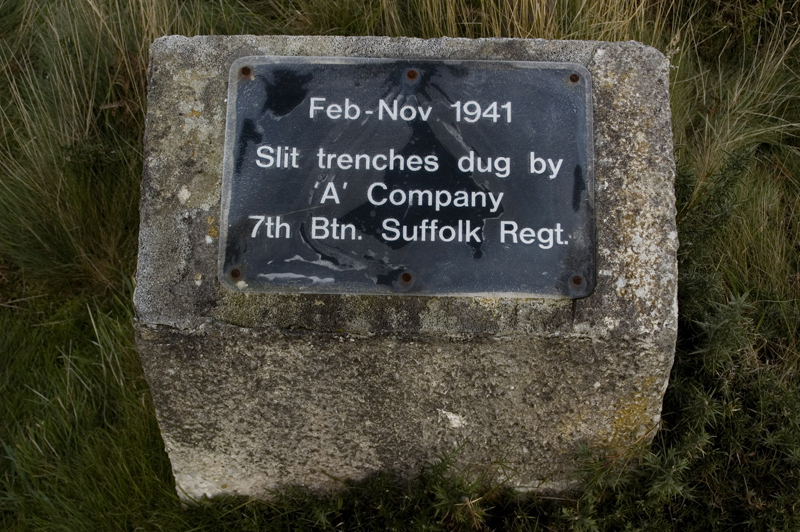
This is positioned close to the above trench.
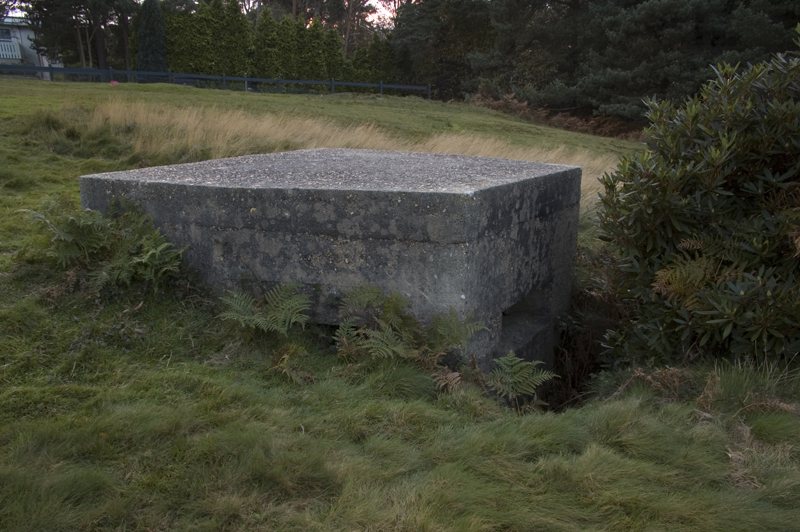
A tiny pillbox sits the other side of the field. This may be a range observation post rather than a defensive position. It is buried up to the top of the entrance.
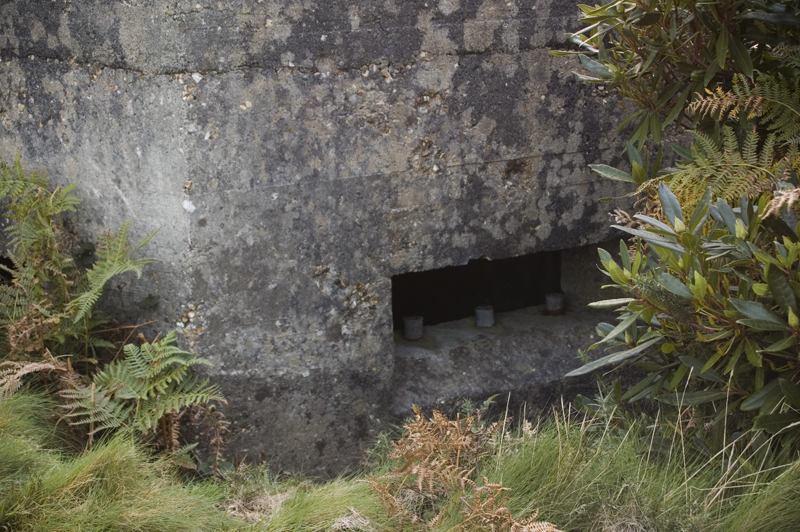
One of the three embrasures.
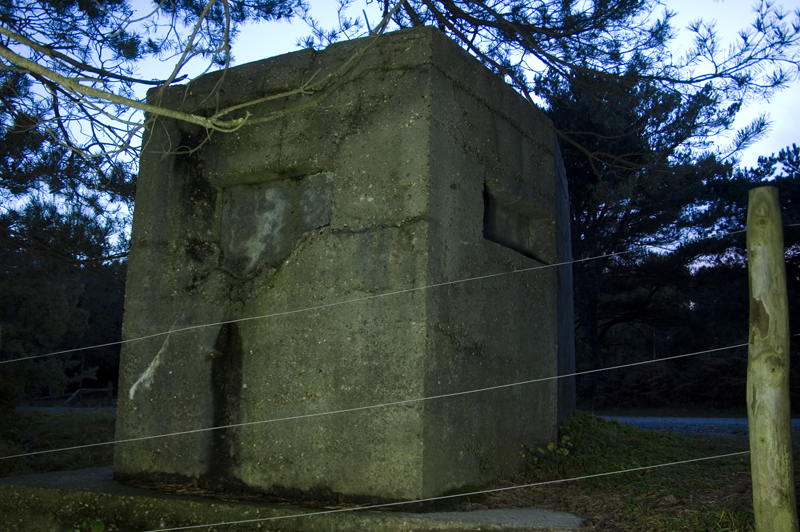
Another identical pillbox in the carpark on the beach. It is either very weathered on the front embrasure, or it suffered a hit during the exercise.
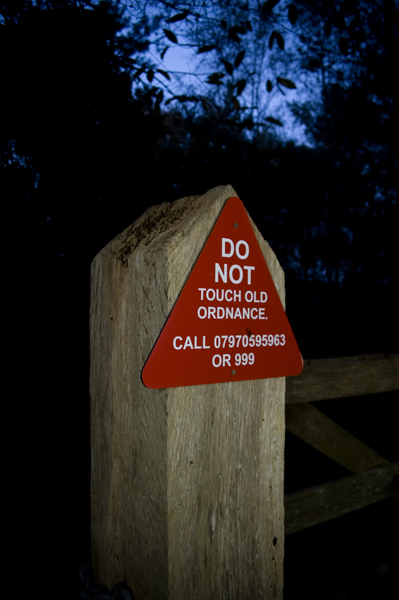
A gate on an old military road entering the heathland bears this sign.
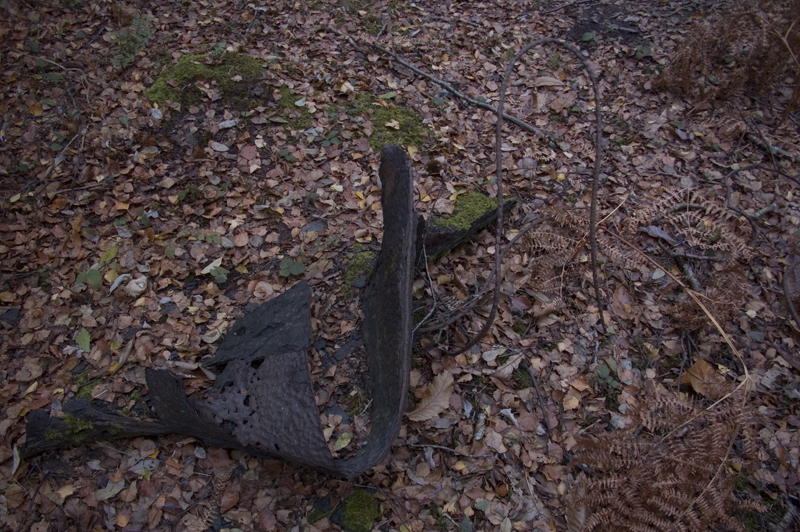
Twisted hulks of inch thick metal lie in the leaves.
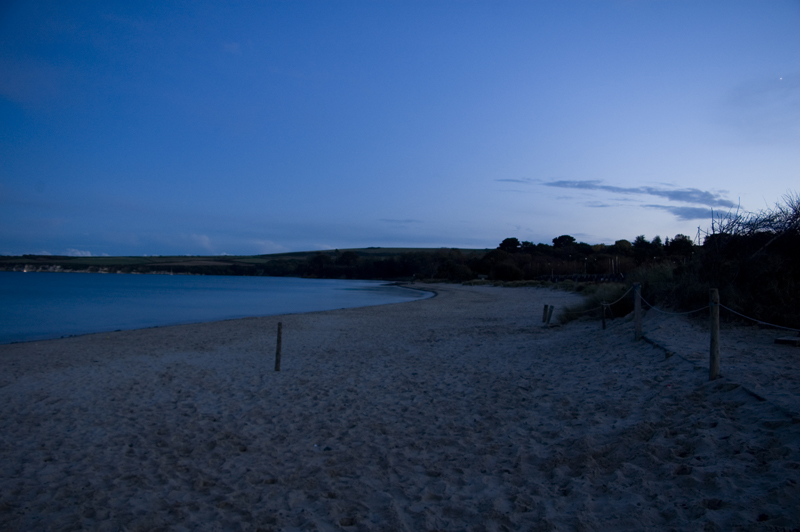
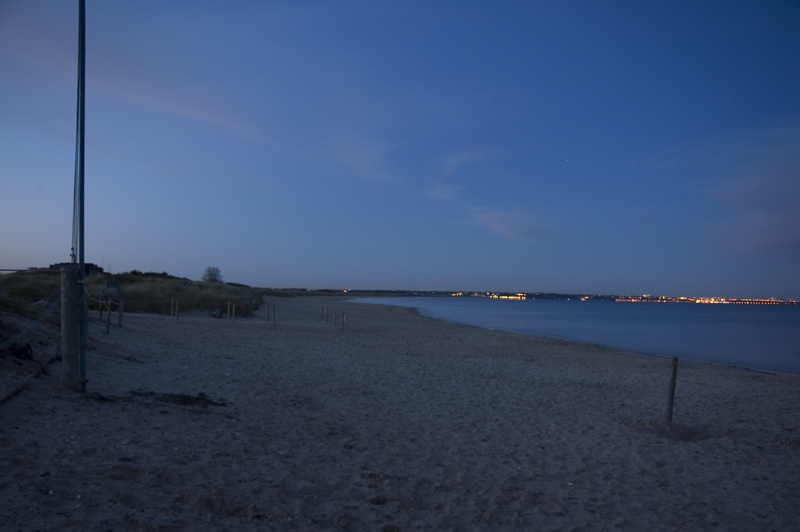
The beach where it all happened.
The light faded so that was it for me down there, although there is plenty more to see. The Sandbanks ferry is still out of order so it was the long way round back to stay the night in bournemouth.
Never mind, the next day was to be eventful aswell.
The exercise was watched by King George VI, then Prime Minister Winston Churchill, Supreme Allied Commander General Dwight Eisenhower and General Montgomery. It involved rocket attacks and an assault landing with thousands of infantry on 4 April, 1944, all with live ammunition.
The exercise was so realistic that a crew of six men drowned when their Valentine semi-submersible tank sunk.
Today, much remains, earlier slit trenches criss-cross the area, quite a few pillboxes and range observation posts are still standing but as part of Studland beach is a designated nudist beach, many were blown up by the army to prevent weirdos being able to spy on the beach. Some Alan Williams turrets lie in the undergrowth, bullet riddled from the exercise. The beach was covered by scaffolding and minefields up to 1944 but some of this was removed for the operation.
I didnt get round to all of it as darkeness fell but most of the pillboxes and OP's are of variant construction, so definately worth a wander through the heathland.
Another interesting defence of the beach was the flame fougasse system. There are various remains of this in nearby woods, and rusted pipes leading onto the beach, although I didn't venture after any of it.
Here's an extract from Wikipedia about the weapon.
''In Britain, during WWII, the flame fougasse was usually constructed from a 40-gallon drum dug into the roadside and camouflaged. It would be placed at a location such as a corner, steep incline or roadblock where vehicles would be obliged to slow down. Ammonal provided the propellant charge which, when triggered, caused the weapon to shoot a flame 10 feet (3 m) wide and 30 yards (30 m) long. Initially a mixture of 40% petrol and 60% gas oil was used; this was later replaced by an adhesive gel of tar, lime and petrol known as 5B.[3]
The November 1944 issue of the US War Department Intelligence Bulletin refers to 'Fougasse flame throwers' used in the Russian defence at Stalingrad being the basis of a German version found in Italy that were buried with a fixed direction discharge tube and integrated with conventional landmines and barbed wire in defense works. The German weapon had an 8 gallon fuel tank and the seven in the installation were wired back to a control point and could be fired individually or all at once.
The flame fougasse has remained in army field manuals as a battlefield expedient ever since. Such expedients are constructed from available fuel containers combined with standard explosive charges or hand grenades triggered electrically or by lengths of detonating cord. Some designs use lengths of detonating cord or blasting caps to rupture the fuel container as well as detonate the main charge.[4] Weapons of this sort were widely used in the Korean and Vietnam wars as well as other conflicts


Fort Henry looming over the beach.
The 'fort' was built in front of a gun emplacement, built in 1940, obscuring its angle of fire and rendering it useless. I suppose the threat of invasion was imminent in 1940 but in '44 it was the other way round so the gun emplacement wouldnt have been necessary.A Norcon pillbox also rests at the base of the cliff underneath.
The site is owned and maintained by the National Trust with free parking for memers or £3 for non members. There is loads to do in the area with some beautiful scenery. I lost count of how many deer I had close encounters wih in the woods as dusk fell.

The new brick vets show the extent of the underground magazine.

The huge observation embrasure.


This corner appears to have been cut out to give a wider view to the west.

The view looking east along Sutdland beach. 64 years ago the view would have been completely different.

The interior was split into four sections with blast walls seperating each. I found it a very tight squeeze with my camera bag on, I'm sure Mr Churchill would have had trouble! I stopped to contemplate, the allies' top brass would have been stood in this very spot planning the invasion of Europe.
I found the level of tthe embrasure very awkward for an observer and quickly realised a bench would have run the length of the room, giving an easier position to watch the 'battle'.


Close up of construction. The OP was built in two apparent stages.

The gun emplacement behind the main bunker. Note the camouflage paint is still easily visible.

You can see how Fort Henry was plonked righ in front of it.


National Trust information boards inside.

There were three metal rods protruding from the wall, presumably for storage.


The gun mount with an entrance to the underground chamber behind. These were gated and locked unfortunately. I'd love to have a gander inside.


A memorial to the soldiers who lost their lives in that tank.

I found this structure walking back along the top of the cliffs. I have no idea what it's purpose was but it looks to be as old as the rest of the WWII fortifications.

Piles of rock and concrete lay around nearby.


Dragon's teeth still guard the gullies nearby. They were built in situ.

This may, or may not be an example of one of the abundant slit trenches in the area, the field, which is now a mini golf course is riddled with them.

This is positioned close to the above trench.

A tiny pillbox sits the other side of the field. This may be a range observation post rather than a defensive position. It is buried up to the top of the entrance.

One of the three embrasures.

Another identical pillbox in the carpark on the beach. It is either very weathered on the front embrasure, or it suffered a hit during the exercise.

A gate on an old military road entering the heathland bears this sign.

Twisted hulks of inch thick metal lie in the leaves.


The beach where it all happened.
The light faded so that was it for me down there, although there is plenty more to see. The Sandbanks ferry is still out of order so it was the long way round back to stay the night in bournemouth.
Never mind, the next day was to be eventful aswell.
Last edited:


































